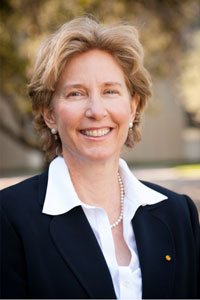News
Harvard University researchers have developed a method to simulate atomic movements on the surface of catalysts quickly and accurately, a critical step towards engineering better and more sustainable catalytic systems.
The research is featured on the cover of the Journal of the American Chemical Society.
“We have demonstrated a method to map complex surface dynamics at atomic resolution on a timescale that would have been unthinkable before,” said Boris Kozinsky, associate professor of Computational Materials Science at the Harvard John A. Paulson School of Engineering and Applied Sciences (SEAS) and the senior author of the paper. “This research gives us fundamental insights to help us engineer better catalysts for chemical production.”
The catalytic reactions that drive our modern world —turning petroleum into plastic or reducing vehicle emissions — occur on the surface of catalytic materials. Today, researchers are engineering catalysts that combine several elements on the surface. These multi-material catalysts can simultaneously improve the activity and the selectivity of a reaction, but elements on the surface aren’t stagnant. On the contrary, the surface of a bimetallic alloy catalyst is a constantly changing environment.
“We have to know what the surface looks like at any given time in order to be able to engineer it for better performance,” said David (Jin Soo) Lim, a research assistant in the Department of Chemistry and Chemical Biology and the first author of the paper.
The researchers looked specifically at the surface dynamics of a palladium silver alloy catalyst.
We have demonstrated a method to map complex surface dynamics at atomic resolution on a timescale that would have been unthinkable before.

It’s been long known that palladium dissolves into silver at high temperatures, but the exact mechanisms of the process have remained a mystery. That is because the conventional quantum modeling method, based on density functional theory, is enormously expensive when used to simulate atomic movements.
“While very accurate, the old method would take as long as a decade to simulate the movement of palladium and silver atoms beyond picosecond timescale,” said Lim.
The Harvard researchers used a machine learning algorithm called Fast Learning of Atomistic Rare Events (FLARE), recently published in Nature Partner Journal Computational Materials that allows accurate simulation of atomic movements across micro-second timescale in only a few days. Rather than solving the quantum equations for the full system like the conventional method, the FLARE algorithm actively learns about various atomic environments from small nuggets of very accurate quantum calculations that are performed on the fly during the simulation. Specifically, when the model encounters a configuration with high uncertainty, it automatically requests more information by performing and learning from a quantum calculation.
“The algorithm learns efficiently, sort of like a diligent student who is not afraid to ask questions when confused. With time it gets better and better at predicting motions of atoms based on only partial information of their arrangement,” said Kozinsky. “It’s like predicting the outcome of a sporting event based on the weather or home-field advantage, rather than looking at the individual statistics of every player in the game.”
This algorithm, combined with microscopy and spectroscopy, gave the team an unprecedented window into how palladium and silver were interacting on the surface of the catalyst. The researchers found that palladium wasn’t initially dissolving into the silver at all, as was previously thought. Instead, silver atoms were moving to cover the islands of palladium, leaving behind pockmark-like pits on the surface after a period of microseconds — a lifetime in a chemical reaction. Only once the palladium was entirely covered did it start to dissolve into the silver.
“It is the first time we’ve ever seen these types of dynamics at this level of accuracy,” said Lim. “Understanding the surface dynamics at this level allows us to really fine-tune the composition of the catalyst to make it optimal for the reaction of interest.”
The research was done as part of the Integrated Mesoscale Architectures for Sustainable Catalysis (IMASC), an Energy Frontier Research Center funded by the Department of Energy, headquartered at Harvard.
“A central goal of the center is to understand how a combination of surface alloys can be used to engineer catalytic activity for chemical production,” said Cynthia Friend, the Theodore William Richards Professor of Chemistry, Professor of Materials Science, and the Director of IMASC, who co-authored the paper. “To do so requires atomic-level control of the surface composition. This research provides a streamlined approach that enables an efficient and unbiased characterization of restructuring dynamics in complex multimetallic systems thereby guiding the design of new catalyst materials. The team led by Prof. Kozinsky has made remarkable advances in methodology that is breaking new ground.”
Next, the researchers aim to explore how these surface dynamics change in the presence of other molecules.
The research was co-authored by Jonathan Vandermause, Matthijs A. van Spronsen, Albert Musaelian, Yu Xie, Lixin Sun, Christopher R. O’Connor, Tobias Egle, Nicola Molinari, Jacob Florian, Kaining Duanmu, Robert J. Madix, and Philippe Sautet.
It was supported in part by the US Department of Energy, Office of Science, Office of Basic Energy Sciences, under Award No. DESC0012573.
Topics: AI / Machine Learning, Materials
Cutting-edge science delivered direct to your inbox.
Join the Harvard SEAS mailing list.
Scientist Profiles
Boris Kozinsky
Gordon McKay Professor of Materials Science and Mechanical Engineering and Professor of Chemistry and Chemical Biology
Cynthia Friend
Theodore William Richards Professor of Chemistry and Professor of Materials Science, Emerita
Press Contact
Leah Burrows | 617-496-1351 | lburrows@seas.harvard.edu




